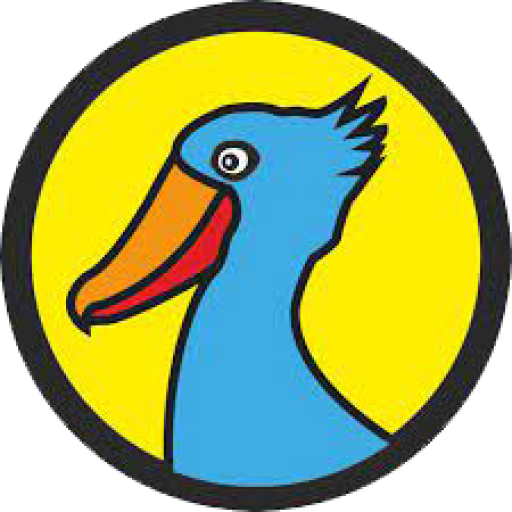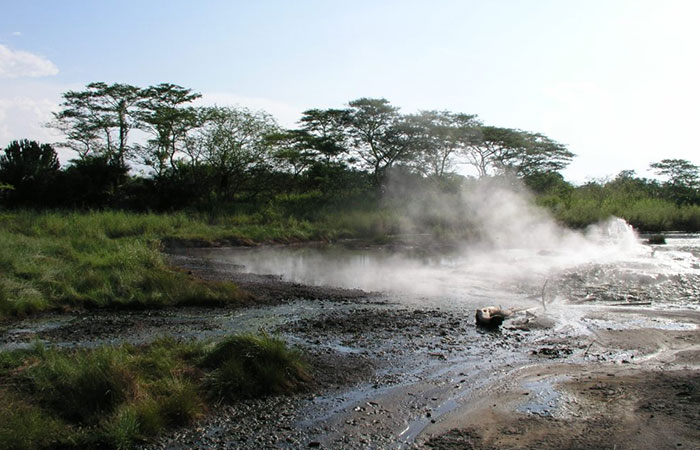In the remote area between the districts of Kabarole and Bundibugyo, Bwamba County is Semliki national park Bordering Democratic Republic of Congo. The park is Uganda’s newest protected area that was established in 1993. Semliki national park can be reached via Mubende which is shorter route from Kampala with 180km driven for about 4-5 hours compared to Mbarara-Kasese-Fort portal route which is 465km (7-8 hours) drive, this route offers a more adventurous experience even before reaching Semuliki National park as you can have a stop at Lake Mburo National Park, Kyambura Wildlife Reserve, Rwenzori Mountains National Park or Queen Elizabeth National Park around Kasese.
Semuliki National Park hosts over 60 mammal species and more than 400 bird species for bird watching safaris. The park is dominant mammal species which include forest buffaloes, leopards, hippos, Mona monkeys, water chevrotains, bush babies, civets, elephants, and the pygmy flying squirrel.
There are eight primate species including red-tailed monkey, Vervet monkey, blue and De Brazza’s monkey, grey-cheeked mangabey, olive baboon, black and white colobus, and Chimpanzee together with over 300 butterfly species.
Semuliki national park is home to 400 bird species, 216 of which including the lyre-tailed honey guide forest ground thrush and sassi’s olive greenbul are true forest birds.
There are also other 12 unique bird species, which are extremely limited in East Africa but can be seen by tourists spending a few days in semliki national Park and these include Western bronze-napped pigeon, yellow-throated cuckoo, piping hornbill, red-sided broadbill, xavier’sgreenbul, capuchin babbler, yellow longbill, blue-headed flycatcher, red-billed helmet-shrike, crested malimbe, pale fronted antpecker and chestnut-breasted negro-finch among others.

Game viewing
This is done in the open savannah grasses of Semuliki Valley national park. A beautiful scenic drive around the park will bring you closer to the marvellous beauty of the Park’s surrounding. Be able to view a number of savannah and forest animals like mammal species forest elephant and primate species.
Sempaya Hot spring
Semuliki National Park is best known for Sempaya hot springs. A drive to Sempaya hot springs enables you to view the Rift Valley towards Congo, forest where you can even stop to watch monkeys and birds while no incurring any park fees since it’s found outside the Park. Various forest hornbills are also worthy scanning while at the patch of fig and palm forest about half way between Sempaya and Ntandi.
Guided nature walk
A Short guided walk trail from the Sempaya Information Centre leads you to the cluster of hot springs at Sempaya. The eye-catching site has its largest geyser spouts up to 2m high from a low salt sculpture opening. While on the trail to the hot springs through a patch of the forest you can encounter red-tailed monkey, grey-cheeked mangabey and black and white colobus that are very common at this point as well as interesting birdspecies like the forest hornbills, blue-breasted kingfisher, red-rumped and yellow-throated tinker bird, Frasier’s ant-thrush and honey guide greenbul.
There is another hot spring, which is more of a broad steaming pool than a geyser. It also offers exposure to a variety of localized birds than the trail to the springs. In addition to the red monkey trail, you can as well see a variety of monkeys, crocodiles, buffalo, and elephant on the River.
Birding
semliki national park is a birders haven at the sites ofSempaya and Ntandiwhich enables one to view the incredible birds like white-crested hornbill, red-billed dwarf hornbill, piping hornbill, yellow-throated nectar, great blue and ross’s turaco. The close quarters of Lake Albert are always associated with the great shoebill stork. Water birds can also be tracked during forest walks.
Cultural encounter
enjoy the way of life of the Batwa and Bamba people who once lived in the forest,the pygmies even have kings and Queens in their societies. The Batwa had been dependent on Semuliki forest for food, shelter, medicine, and tools due to their lifestyle of hunter-gatherers.
These pygmies were evicted from staying in the forest because of tourism, the Park offers an alternative source of income to the Batwa through allowing them to display their cultural history to tourists inform of music and dance performances at Ntandi, pls allowing them to produce beautiful handcrafts for sale.

